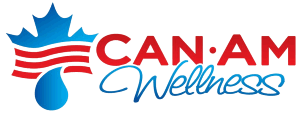April 2008 News from IAQ
For The IAQ Industry
Apr, 2008 Vol. 1
Mitigating IAQ Problems
Many types of mitigation strategies have been used to solve indoor air quality problems. All efforts to correct IAQ problems should include an effort to identify and control pollutant sources. It is well established source control is one of the basic strategies for controlling indoor air problems. Examples of source control include:
- prohibit smoking indoor or limit smoking to areas from which air is exhausted (not recirculated)
- relocate contaminant-producing equipment to an unoccupied, better ventilated, or exhaust-only ventilated space
- select products which produce fewer or less potent contaminants while maintaining adequate safety and efficacy
- modify occupant activities
- improve storage of contaminant producing materials
- seal surfaces of building materials that emit VOCS
- control humidity
Source control includes removal or reduction and can be accomplished by a one-time effort or requires an ongoing process.
Do You Know the Solutions to These Problems?
- Outdoor air ventilation is too low
- Contaminant enters building from outdoors
- Occupant activities contribute to air contaminants
- HVAC system is a source of biological contaminants
- HVAC system distributes contaminants
- Mold and mildew growth due to moisture from condensation
- Building materials and furnishing produce contaminants
- Housekeeping or maintenance activities contribute to problems
- Remodeling or repair activities produce problems
- Combustion gases
(answers next month)
TO-15
Complaints about odors in a home or workplace, or complaints about headache or nausea may indicate a need for VOC testing. VOC testing can be done with the use of a sampling pump and sorbent tube or a SUMMA canister. The simplicity of the SUMMA canister and measurement ability of today’s analytical equipment make it a powerful tool for a VOC investigation.
